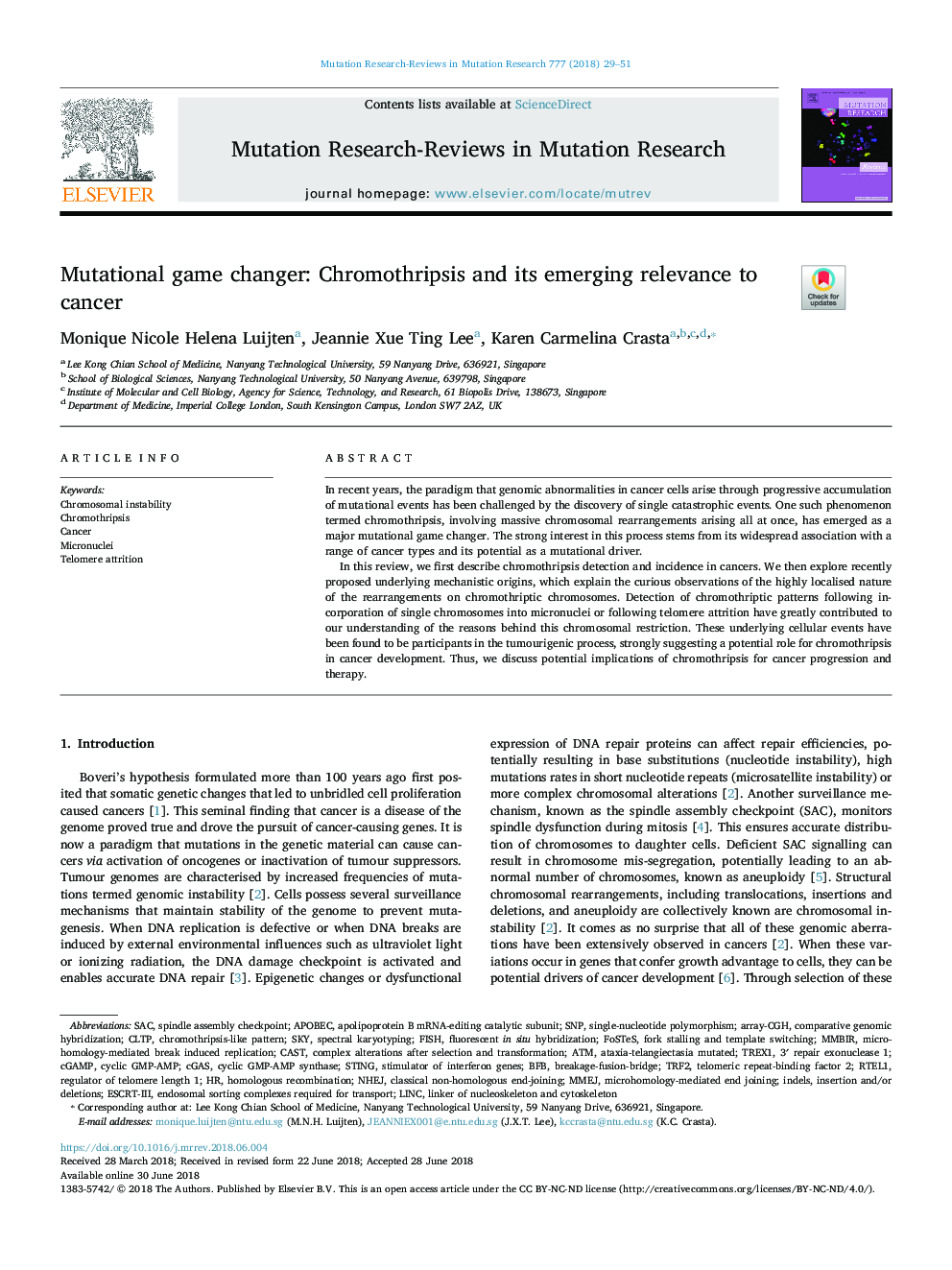| Article ID | Journal | Published Year | Pages | File Type |
|---|---|---|---|---|
| 8456681 | Mutation Research/Reviews in Mutation Research | 2018 | 23 Pages |
Abstract
In this review, we first describe chromothripsis detection and incidence in cancers. We then explore recently proposed underlying mechanistic origins, which explain the curious observations of the highly localised nature of the rearrangements on chromothriptic chromosomes. Detection of chromothriptic patterns following incorporation of single chromosomes into micronuclei or following telomere attrition have greatly contributed to our understanding of the reasons behind this chromosomal restriction. These underlying cellular events have been found to be participants in the tumourigenic process, strongly suggesting a potential role for chromothripsis in cancer development. Thus, we discuss potential implications of chromothripsis for cancer progression and therapy.
Keywords
RTEL1cGAMPAPOBECcyclic GMP-AMPArray-CGHcyclic GMP-AMP synthaseLINCMMEJTRF2TREX1FoSTesMMBIRNHEJSACESCRT-IIIBFBCgasfork stalling and template switchingataxia-telangiectasia mutatedSKYspindle assembly checkpointChromosomal instabilitycomparative genomic hybridizationATMmicronucleiTelomere attritionCancerbreakage-fusion-bridgefluorescent in situ hybridizationCASTlinker of nucleoskeleton and cytoskeletonFishendosomal sorting complexes required for transportstimulator of interferon genesHomologous recombinationSTINGIndelsSingle-nucleotide polymorphismmicrohomology-mediated end joiningSNPchromothripsisspectral karyotyping
Related Topics
Life Sciences
Biochemistry, Genetics and Molecular Biology
Cancer Research
Authors
Monique Nicole Helena Luijten, Jeannie Xue Ting Lee, Karen Carmelina Crasta,
